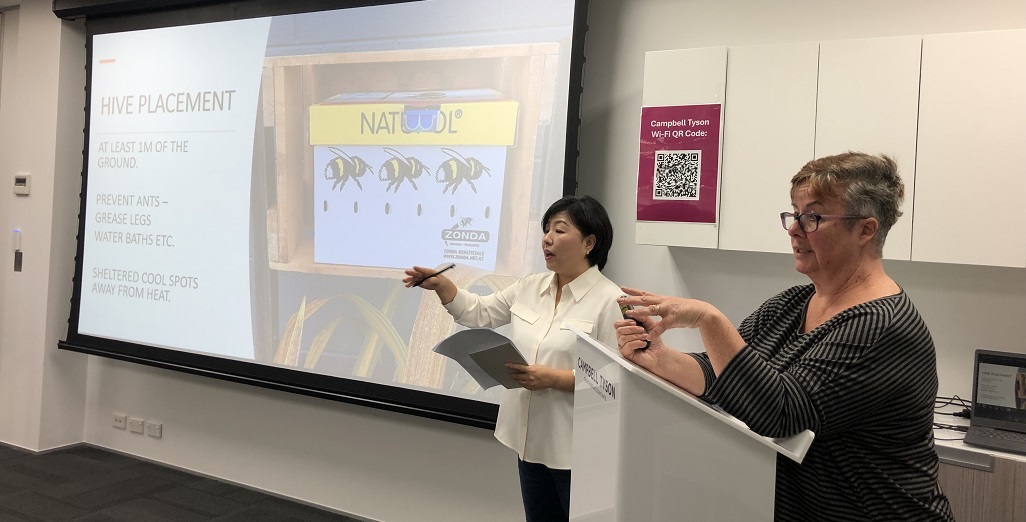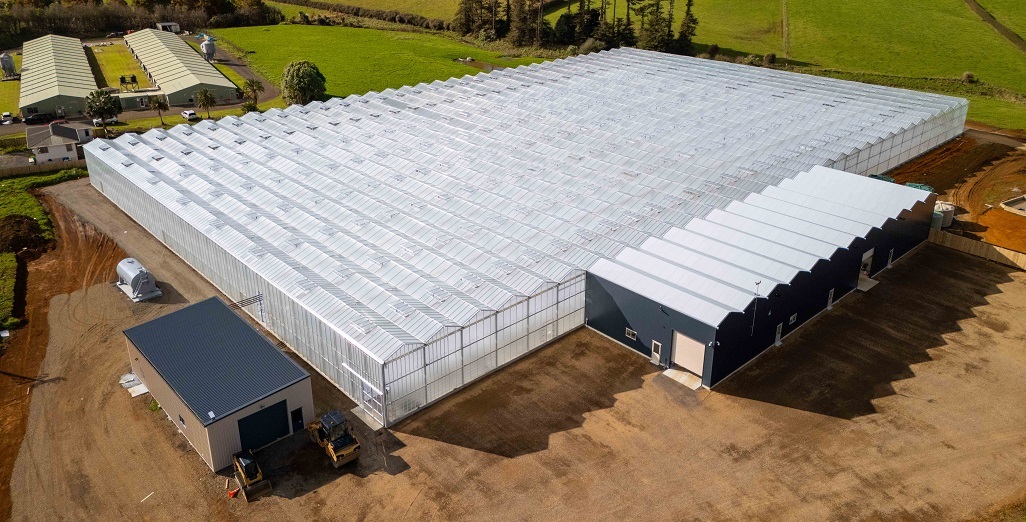Sign up here to subscribe to the Grower2grower Ezine. Every two weeks you will receive new articles, specific to the protected cropping industry, informing you of industry news and events straight to your inbox.
Dec 2018
Farm Biosecurity

Be aware of biosecurity threats
Several issues ago I posted an article pertaining to suspected hormone damage on tomato plants. A question was raised: “Are you confident that the suspected hormone damage could not be a potential biosecurity issue – e.g. a virus? Should this be reported to MPI and have a sample assessed?”
In this case I was 99.999% positive it was hormone damage that had caused the issue in the tomato plants. However, the question raised did get me thinking of what are the processes to go through if I, or a grower, do come across a potential biosecurity risk. Even though it is very rare, to understand the process is important.
Below is a fact sheet provided by TomatoesNZ, it is available on their website. This factsheet has very good information of how to prevent a biosecurity risk, including using quality seedlings, how to keep your greenhouse clean and how to reduce your risk.
Farm biosecurity for indoor tomato growers
What is Farm Biosecurity?
It has been estimated that plant pests are responsible for up to 15% loss in potential farm income. Controlling pests and diseases to minimise crop loss could be considered best practice or it could be considered farm biosecurity. Either way it makes good economic sense.
The more formal definition of farm biosecurity is “management practices and activities that are carried out on your property to prevent the entry and spread of pests”.
Ultimately, farm biosecurity is about protecting your livelihood, your industry and that of your neighbours. Farm biosecurity is your responsibility, and that of every person working on or visiting your property.
The nature of the greenhouse environment means tomato growers face unique challenges when it comes to managing pests. There is no natural weathering to remove debris from previous crops and crops are grown relatively intensively which can increase the risk of pest incidence as well as the likelihood of spread. What this means is tomato growers undertake farm biosecurity as a matter of course due to the environment they are operating in.
When signing up to GIA, TomatoesNZ committed to raising awareness of biosecurity and how it can be monitored and managed amongst tomato growers. Farm biosecurity is a practical way for all growers to demonstrate awareness of and commitment to managing biosecurity issues.
Although important, farm biosecurity does not need to be onerous. To follow are some areas to consider in the context of farm biosecurity. It may be that you already have it covered – if so, give yourself a pat on the back. If not, consider how you can implement some of the following concepts into your day to day operations.
Be aware of biosecurity threats
Virtually every grower in New Zealand could name fruit fly as a biosecurity threat but do you know the other pests or diseases of greatest threat to the tomato industry? On behalf of TomatoesNZ, Market Access Solutionz has developed fact sheets for some of the pests that are the most likely to enter New Zealand and/or would have the most significant economic impact on tomato growers. These fact sheets can be found on the Exotic Pests – Fact Sheets page.
Ensure relevant staff are familiar with pests you usually associate with your crop and property and those that they should be on the look-out for. Display posters of pests normally associated with your crop and posters of exotic pests to look for.
Use quality seedlings
Any plant material moved onto your property can be a potential source of pests. Monitor any planting material that comes onto your property. Ensure you are sourcing high quality seedlings from a trusted source and inspect prior to planting for any signs of pests. Keeping records of plantings (and other inputs) enables you to trace back and trace forward if necessary (i.e. where has it come from, where did it get planted).
Keep it clean
Workers and Visitors
Workers, visitors, equipment can spread pests onto and around your property. Make sure workers on your property are aware of hygiene practices for themselves, equipment and vehicles. This can easily be included as part of staff induction. Signage can be put up to ensure visitors are aware of any specific hygiene or biosecurity requirements you may have.
Remove of Waste and Dry Cleaning
Removing old, unhealthy or unwanted plant material is essential as it can be a major source of pest contamination. Consider how this is disposed of – do not leave sitting near the greenhouse. Also, remove any other associated equipment such as trays, pots and strings. The effectiveness of disinfectants and sanitisers may be reduced if there are high levels of soil so dry-cleaning dust and soil is advised.
Pre-Cleaning and Sanitising
Once dry-cleaning and most contaminants have been removed, high levels of infective material may still remain. Cleaning using detergents/sanitisers will reduce the spread of disease in wash water and may reduce the time required to clean by up to 60%.
Water System and Equipment Sanitising
All irrigation systems may contain some form of contamination. Flushing irrigation lines after any treatment will minimise the likelihood of contamination. Ensure all equipment that is moved from greenhouse to greenhouse is cleaned and sanitised appropriately as this can be a major source for transfer of contamination.
Disinfection
Even after cleaning and sanitising, the level of disease present could be sufficient for it to re-establish. Ensuring all surfaces are thoroughly wet with disinfectant is the most likely way to break the cycle of infection.
Fogging and Aerial Disinfection
To disinfect any areas that may be inaccessible or have been overlooked, consider fogging the greenhouse and any storage areas. Regular fogging during the growth phase of the crop may also be beneficial.
General Hygiene
There are a number of other ways to minimise/manage transfer of contamination around your property and the wider region.
- Sanitise pruning knives
- Foot dips / disinfectant soaked mats placed in appropriate locations around your property and are regularly changed
- Hand hygiene – visitors as well as workers should be required to wash their hands
- Wheel dips for equipment
- Disinfection of paths and areas around the greenhouseClean clothing and no smoking
Check your crop
Know what’s normal and monitor your crops, the frequency will be dependent on growth stage, weather conditions, and presence of pests. Increase the level of monitoring if you have any concerns. This can be as simple as a walk through the greenhouse or part of a more formal crop monitoring programme. Knowing how your crop usually appears, and what the signs and symptoms of your usual pests look like will enable you to notice anything unusual. Take photos or keep records of anything unusual if you think you need to. Early detection of a new pest may can greatly increase the chances of eradication before it establishes.
Follow instructions when applying agrichemicals, the misuse of agrichemicals can lead to resistance development which can lead to ongoing biosecurity problems. If you suspect pesticide resistance, get additional advice from an agronomist or chemical supplier.
Work with sick or suspect areas last as this will minimise the risk of spreading pests if present. Destroy unhealthy plant material by burying or burning to ensure infected plant material does not spread pests.
Abide by the law
Support and be aware of laws and regulations established to protect the tomato industry and other horticultural industries in your region.
Report anything unusual
If you see any unusual pests or plant symptoms report it immediately to the MPI Exotic Pest and Disease Hotline 0800 80 99 66.
The "Resources and fact sheets" page has resources for tomato growers including the Tomato Grower Biosecurity Plan and Checklist 2017. The last pages of that document include a Biosecurity Best Practice Checklist – exploring the concepts above in more detail. Completing the checklist will give you the opportunity to see what you are already doing and what you might want to consider including in your growing operation in future.
To view these documents on the TomatoesNZ website click on the links below
https://www.tomatoesnz.co.nz/industry/biosecurity/what-is-farm-biosecuritynew-blog-post/
https://www.tomatoesnz.co.nz/industry/biosecurity/resources-and-fact-sheets/
I appreciate your comments. Please feel free to comment below or on the grower2grower Facebook page:
https://www.facebook.com/StefanGrower2grower/
Article content supplied by Helen Barnes, General Manager, TomaotesNZ
CLASSIFIED
Subscribe to our E-Zine
More
From This Category

Tomato grower applies Tobre after contamination

KWS inaugurates new R&D facility in Uberlândia, Brazil

John van Santen joins the management of Metazet

Workshop for Auckland’s Korean tomato growers held last week

Could the Global Boom in Greenhouses Help Cool the Planet?

























